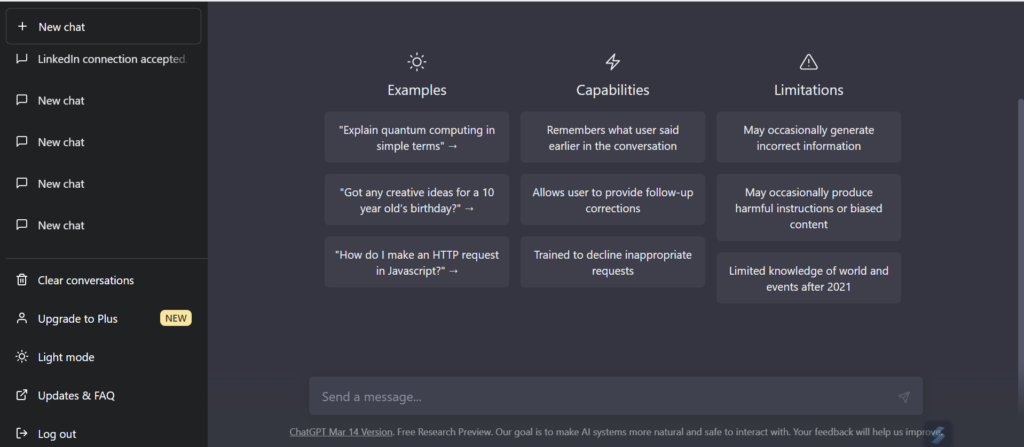Introduction:
ChatGPT is an AI technology developed by OpenAI. It is built on the GPT-3.5 architecture, which allows it to understand and respond to a wide range of queries with exceptional accuracy. It is a powerful tool that can be used in various industries, including customer service, education, research, and entertainment. In this article, we will explore the features of ChatGPT, its applications, and how it can be used to improve productivity and efficiency.
What is ChatGPT?
ChatGPT is an AI tool designed to interact with users through natural language processing. It uses machine learning algorithms to understand and respond to user queries in real-time. The system can be accessed through a chat interface or voice commands, and it can provide personalized responses based on the user’s previous interactions.
The technology behind ChatGPT is based on the GPT-3.5 architecture. This architecture is designed to optimize language models for natural language processing tasks. It uses a transformer-based neural network, which allows it to process large amounts of data and learn from user interactions.
The GPT-3.5 architecture has several features that make it ideal for natural language processing. These features include:
Attention mechanism: This feature allows the model to focus on relevant information while processing user queries. It enables the system to understand context and anticipate user needs.
Multi-head attention: This feature allows the model to process multiple queries simultaneously, improving its efficiency and accuracy.
Positional encoding: This feature helps the model understand the position of words in a sentence, improving its ability to understand the meaning of the text.
Transformer architecture: This feature allows the model to process large amounts of data efficiently, making it suitable for natural language processing tasks.

Applications of ChatGPT:
There are many ways in which ChatGPT can be used in various industries. Some of the applications of ChatGPT include:
Customer service: ChatGPT can be used by businesses to provide customer support and answer frequently asked questions. This can help reduce wait times and improve customer satisfaction.
Education: ChatGPT can be used as a study aid, helping students with homework assignments or providing additional information on specific topics. It can also be used by teachers to answer student queries in real-time.
Research: ChatGPT can be used to help researchers find information on a specific topic or to assist in data analysis. It can also be used to generate reports or summaries of research findings.
Personal assistant: ChatGPT can be used as a virtual assistant to manage daily tasks, such as setting reminders, scheduling appointments, and making to-do lists.
Entertainment: ChatGPT can be used for entertainment purposes, such as playing games or telling jokes. It can also be used to generate personalized recommendations for movies, TV shows, and books.
How to use ChatGPT:
Using ChatGPT is simple and straightforward. Users can communicate with the AI through a chat interface or voice commands, and the system will process the input and generate a response. Here are the steps to follow when using ChatGPT:
Access the system: ChatGPT can be accessed through a chat interface or voice commands. To access the system, users can visit the website or download the mobile application.
Enter a query: Users can enter their query in the chat interface or speak the query using voice commands. The system will process the query and generate a response.
Receive a response: Once the system has processed the query, it will generate a response. The response can be in the form of text or voice, depending on the user’s preference.
Engage in a conversation: Users can engage in a conversation with ChatGPT by asking follow-up questions or providing additional
Bottom Line
Overall, ChatGPT is a powerful language model that can be used for various applications, including chatbots, virtual assistants, education, and research. Its ability to understand natural language and generate human-like responses makes it a valuable tool for businesses, educators, and researchers alike.


